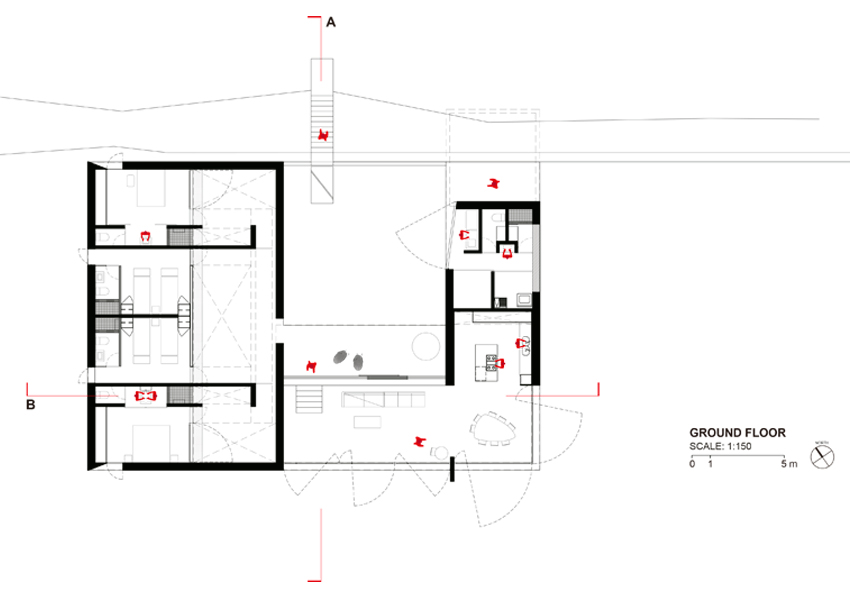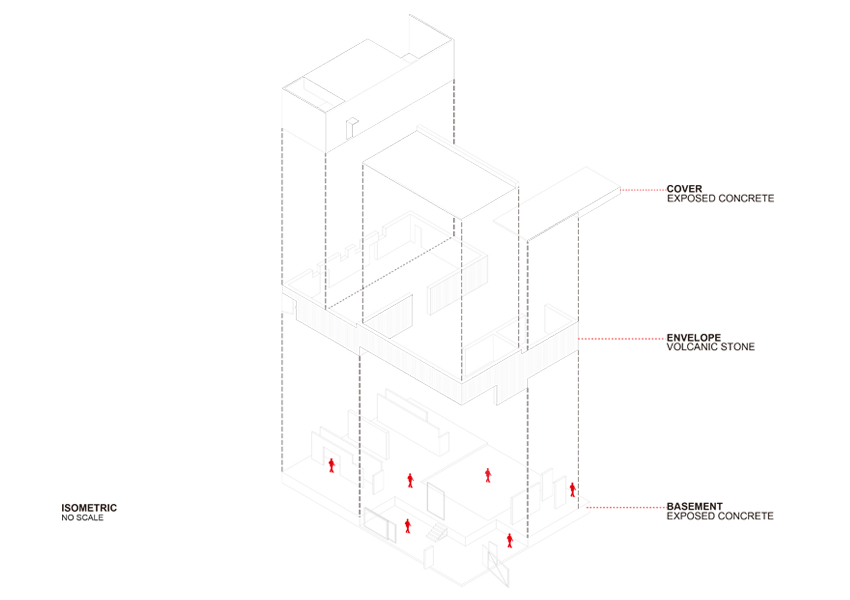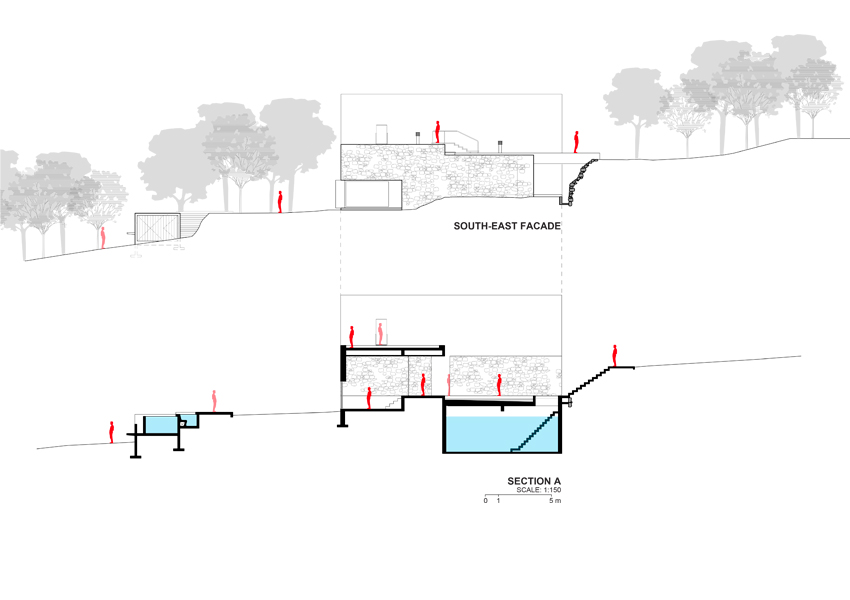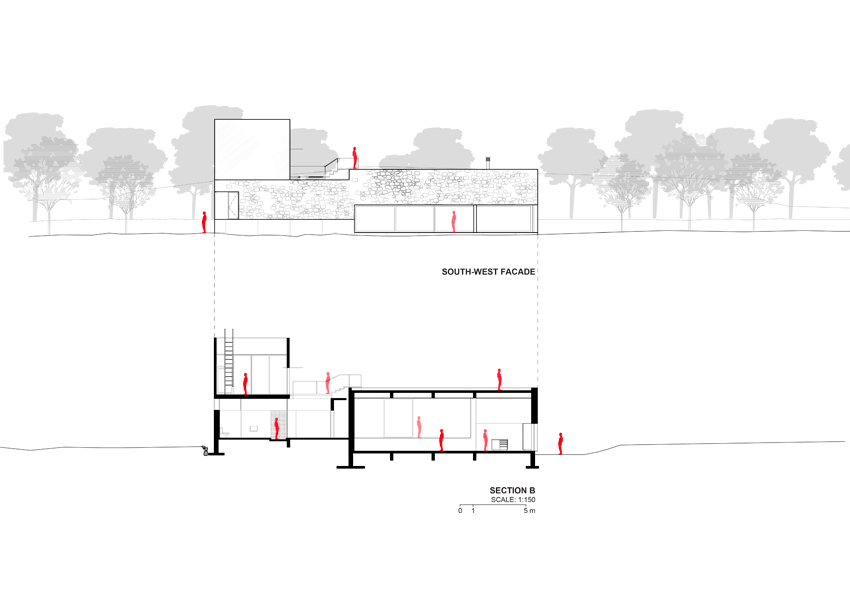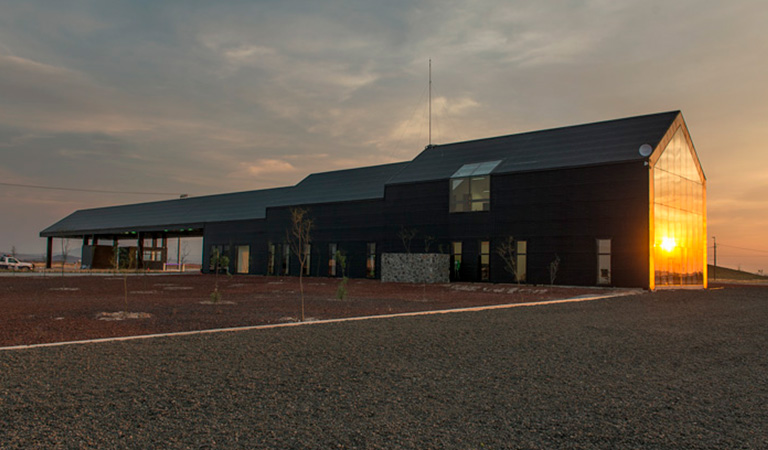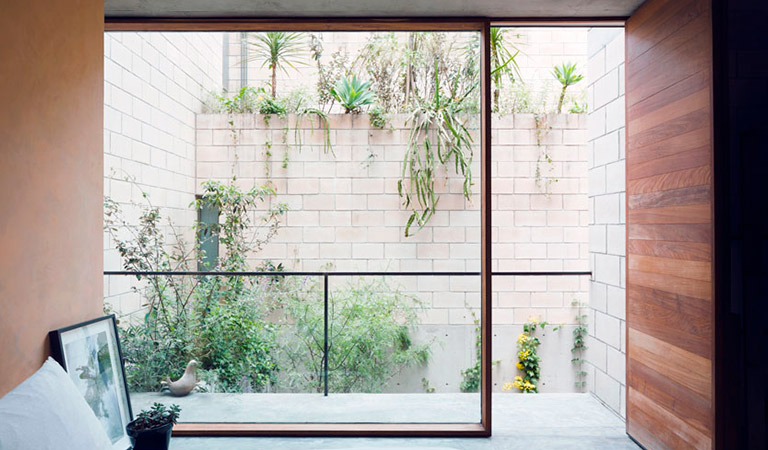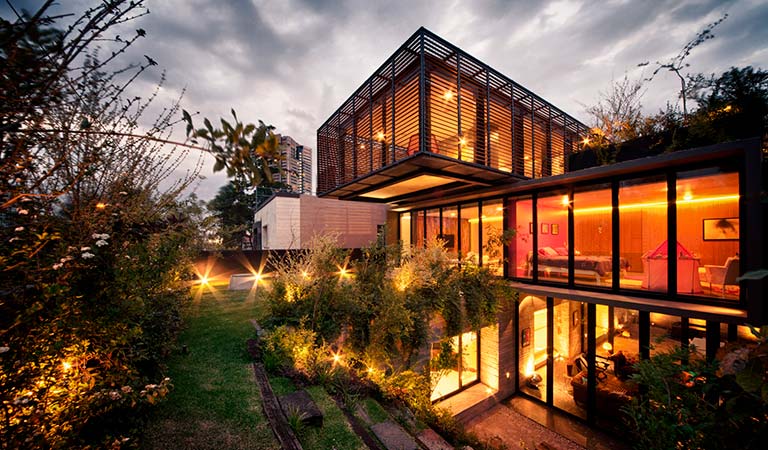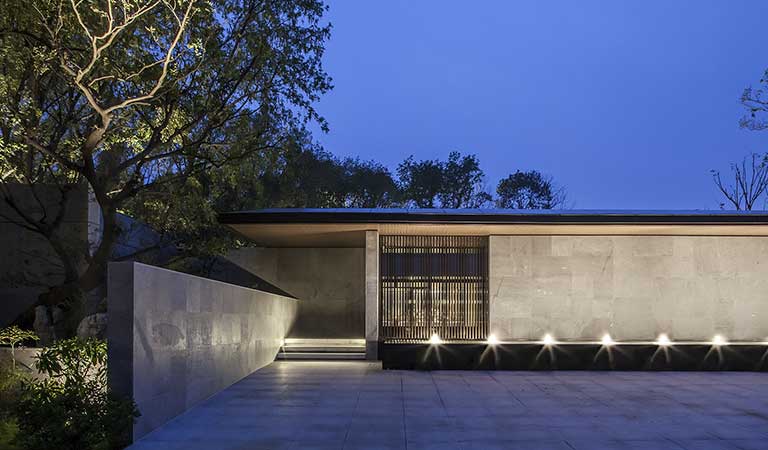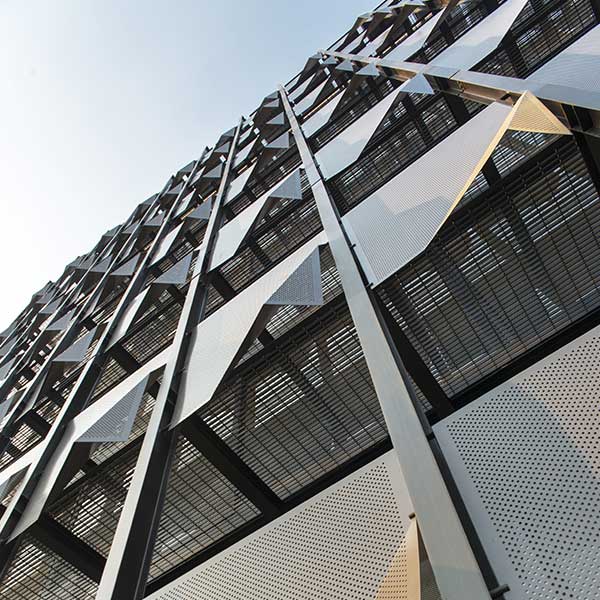Casa Meztitla
Architecture: EDAA
Architect (partner) in charge: Luis Arturo García
Design team: Juan Hernández, Jahir Villanueva, Antonio Rivas, Ana Fernanda Rodríguez, Diego Ruiz Velazco
Construction team: Hans Álvarez, Yolibel Allende
Status: Constructed
Typology: Single house
Completion date: 2014
Constructed Area: 400 m2
Location: Tepoztlán, México
Photography: Yoshihiro Koitani, KUU Studio
— Description by EDAA —
Casa Meztitla is an intervention of a natural scenario. It showcases the luxurious value of leisure, the tropical weather, the intense sunlight, the smells of nature, the over 500 year-old landscaped terraces and the ever-present rock mountain: El Tepozteco. It is context in itself. The house, built out of rough stone, crawls low under the trees, aligned with the vegetated-covered stone slopes. It is the creation of pure space within the natural space (Paz, O., 1987).
It has an introverted living yet is continually open to its surroundings. Only two elements reveal its existence to the outside world: the colorful bougainvillea flowers showing randomly through the trees’ dense foliage, which mark the plot’s perimeter; and the massive and monolithic white box that emerges through the treetops.

© Yoshihiro Koitani
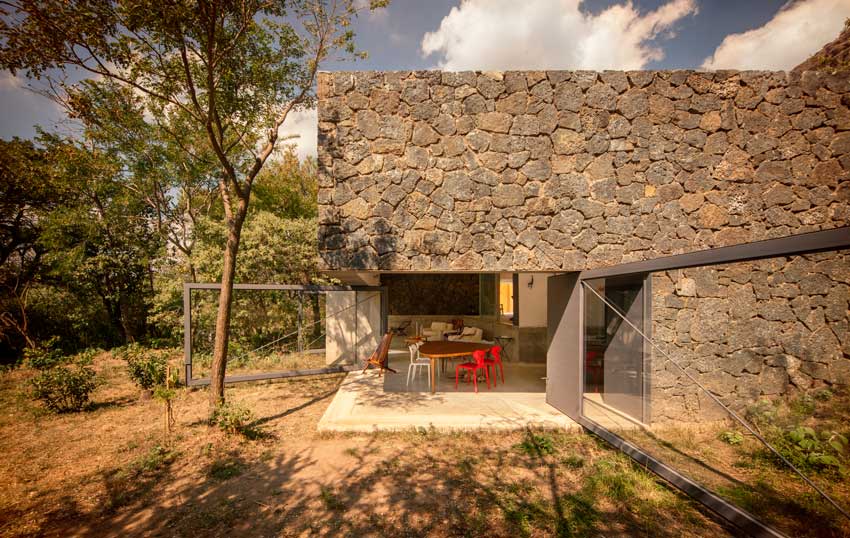
© Yoshihiro Koitani
— Commission —
This is a weekend/holiday/part-time/retirement home.
The site was selected by myself, in a sort of find-a-great-site and build-a-house commission. I selected this site, first, due to its non-expensive cost at that time. Second, because of its extraordinary natural landscape and its proximity to El Tepozteco mountain (a national park). My first choice was another piece of land, further into the bush, but the clients were not comfortable with the lack of proximity to a road.
The project is located in an area called Meztitla (in Nahuatl language means: place near the moon) in the outskirts of Tepoztlán, a town 90 km south of Mexico City, in the Morelos province.
— Clients —
The clients are a couple at their 60´s. They were concerned about having enough space to host for their family and friends. They are both dedicated to statistical analysis and marketing research.
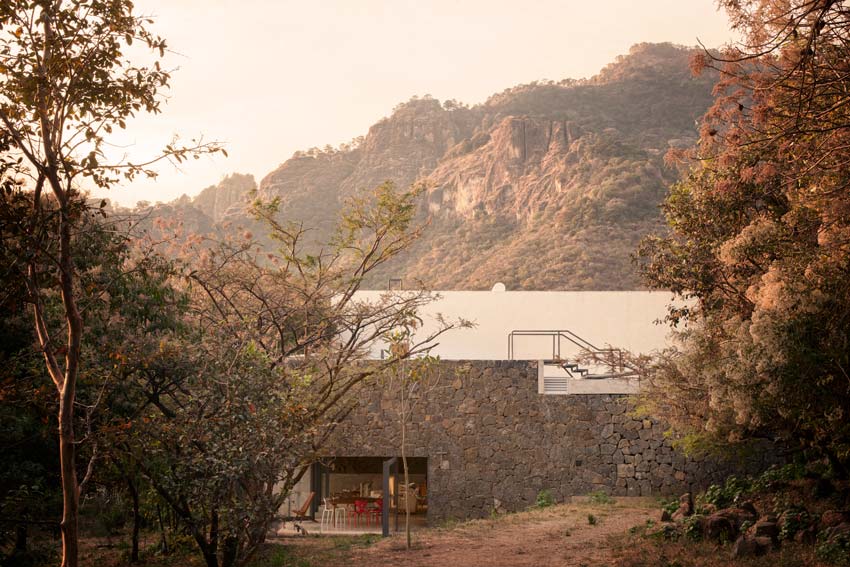
© Yoshihiro Koitani
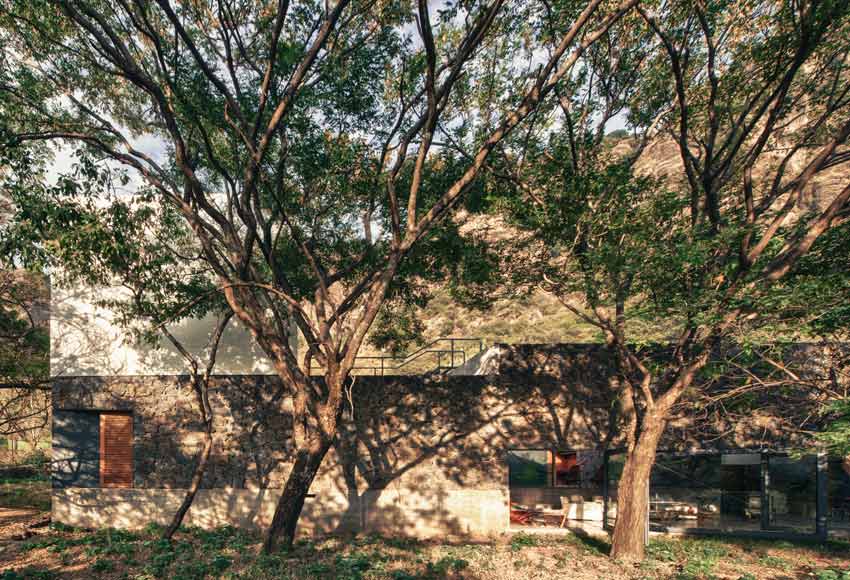
© Yoshihiro Koitani

© Yoshihiro Koitani
— Layout —
The house layout is divided in four areas: a Social area with the living and dining, an open kitchen, and ‘portico’ viewing the grass patio (the only artificially induced nature in the project) which is the centre of the house, and the floor slab for covering the potable water reservoir with a capacity of 280 m3 (61,591 gallons); a Service area sheltering a grill, a toilet and a shower room, laundry and storage area; the Room´s area (two main rooms and two guest rooms) all of them are accessed through outdoor patios, the two main rooms, on the far sides, have a private patio each.
The Studio, which would be the fourth area –in a second floor-is accessed through the house terrace-roof, and is open on both sides to a pair of outdoor patios.
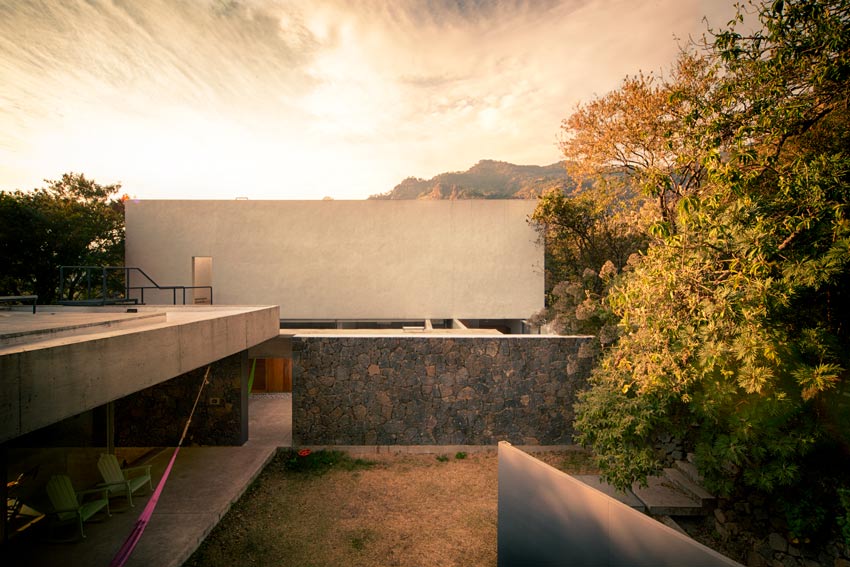
© Yoshihiro Koitani
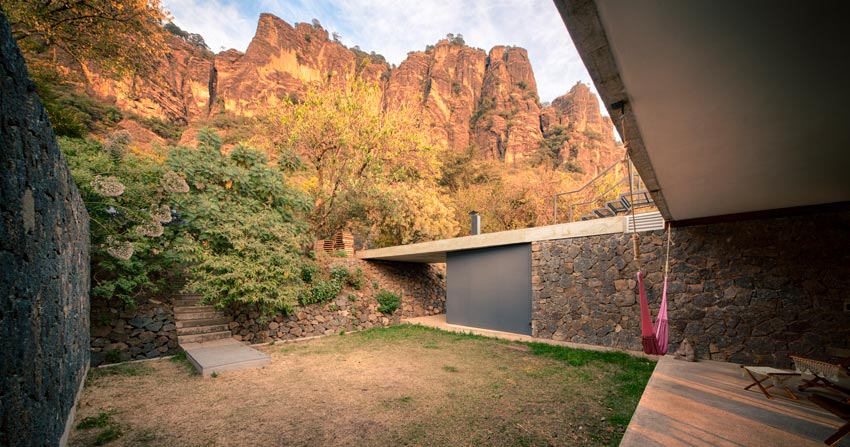
© Yoshihiro Koitani
The house´s theme is not about the program but the never ending relationship between indoors and outdoors: there is no way one can go from an area to another without walking through outdoor spaces; every area (except for services) is open to the exterior in a way that one can actually be out of the house by crossing any doors.
The house works likes a series of rooms connected through diverse types of outdoor areas. At the end, the mild subtropical weather was used as an excuse for not building a house that closes to itself, but that continuously opens to the natural environment and hopefully, it will bond the house, its living and nature in a symbiotic relation.
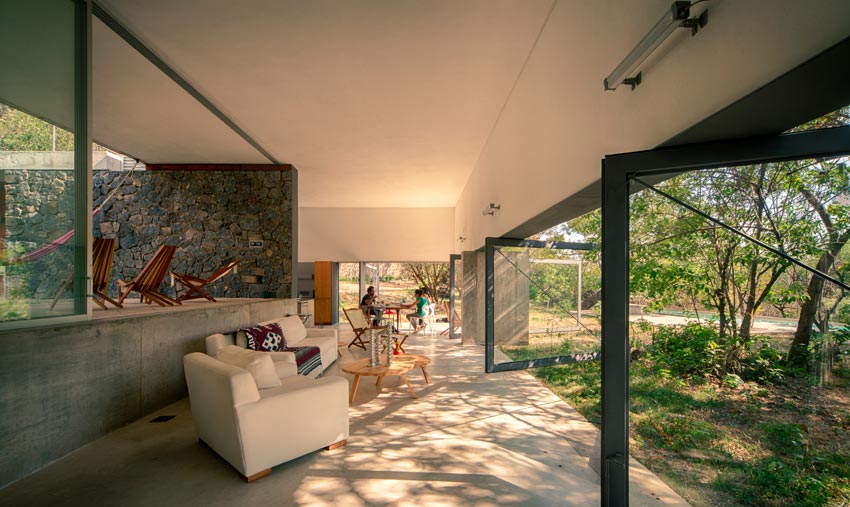
© Yoshihiro Koitani
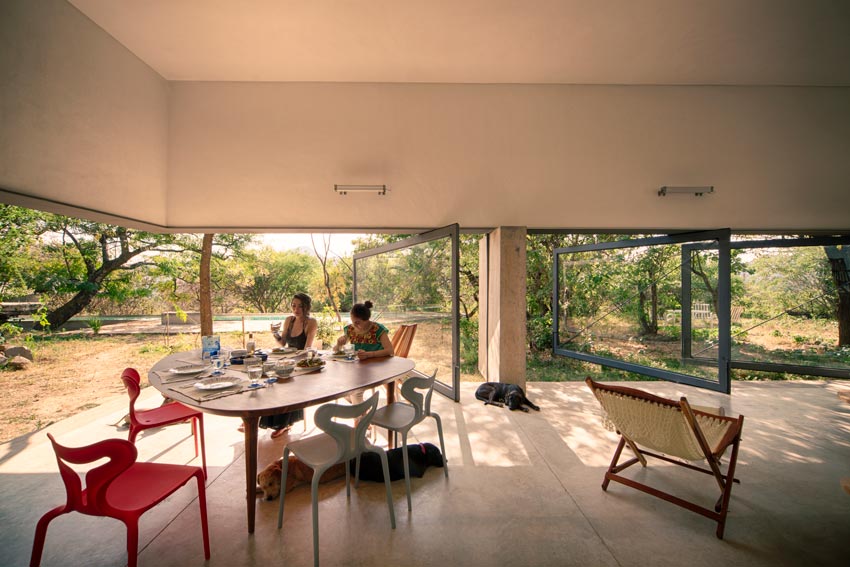
© Yoshihiro Koitani
— Materiality —
The construction materials are mineral and basic, locally provided and crafted: concrete for the foundations, basement, and main structural elements; volcanic rock and cement block for the walls; a mix of white cement and lime for plastering the white-coloured walls.
Interior walls and ceilings are finished with a white cement and lime plaster; exposed polished concrete for the floors; pine wood and ply-wood for the carpentry finished with oil and wax; steel doors with tempered glass for rotatory doors.
The furniture material selection is based on natural woods and light colour fabrics, steel, and polypropylene. There is a great emphasis on using traditional tropical Mexican furniture such as hammocks, hammock rocking-chairs and wooden chairs.
The reason for this simple and logical selection of materials throughout the project is for economic and contextual reasons, as for the client´s petition to have a house in a subtropical rainforest, which is easily maintained.
The materials will age naturally and blend with the context.
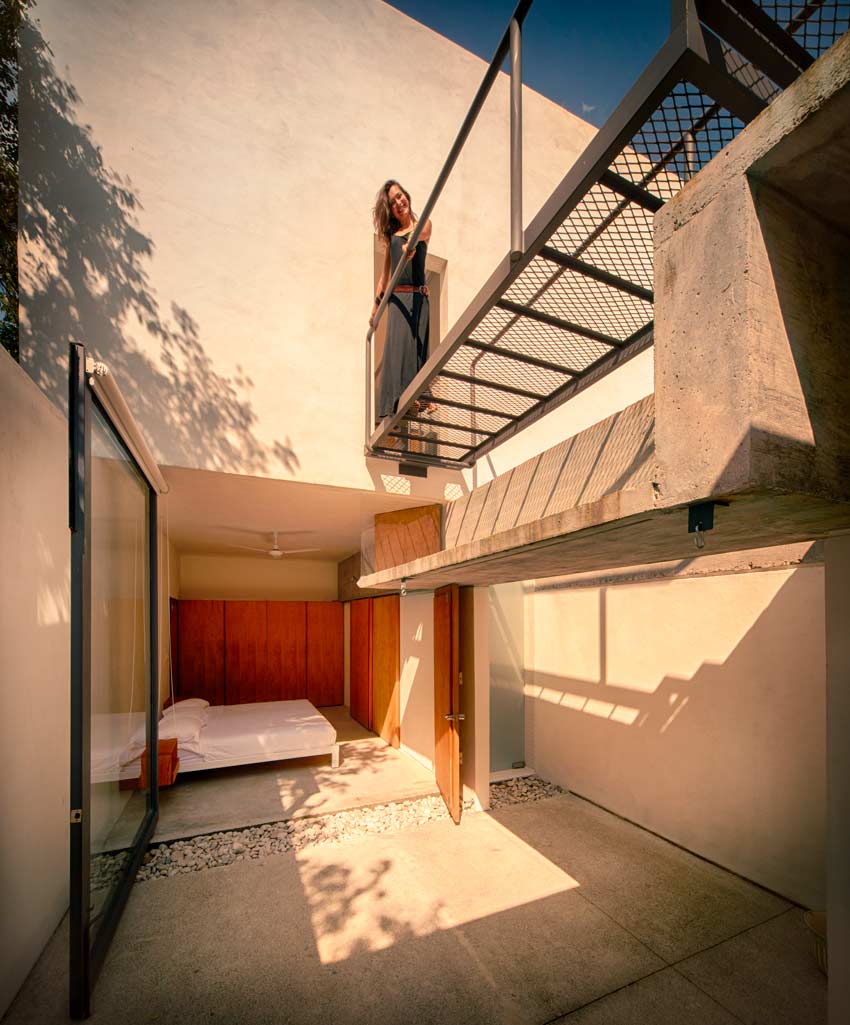
© Yoshihiro Koitani
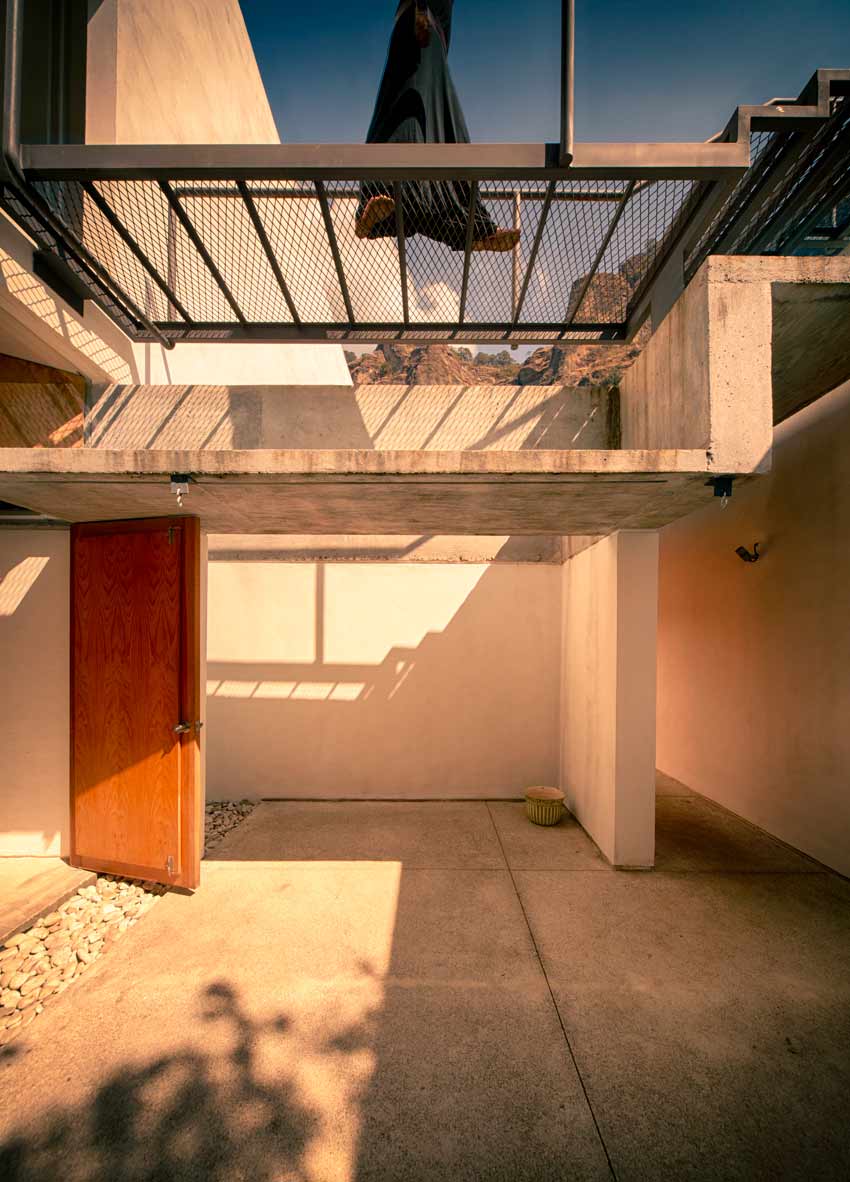
© Yoshihiro Koitani
— The pivoting glass doors —
The reason for them is simple: the plot is at an extraordinary natural scenario and the weather is benign; I wanted this to be a house that would never close to itself, that would be constantly opened and in touch with nature but the clients were not confortable with this idea of being so exposed.
The idea of having the ‘opening’ been closed by rotatory glass doors was a good solution. Now, everyone is able to adjust their degree of exposure while keeping a constant visual relation with the outdoors. Besides that, the rotatory panels are very expressive architectural wise.
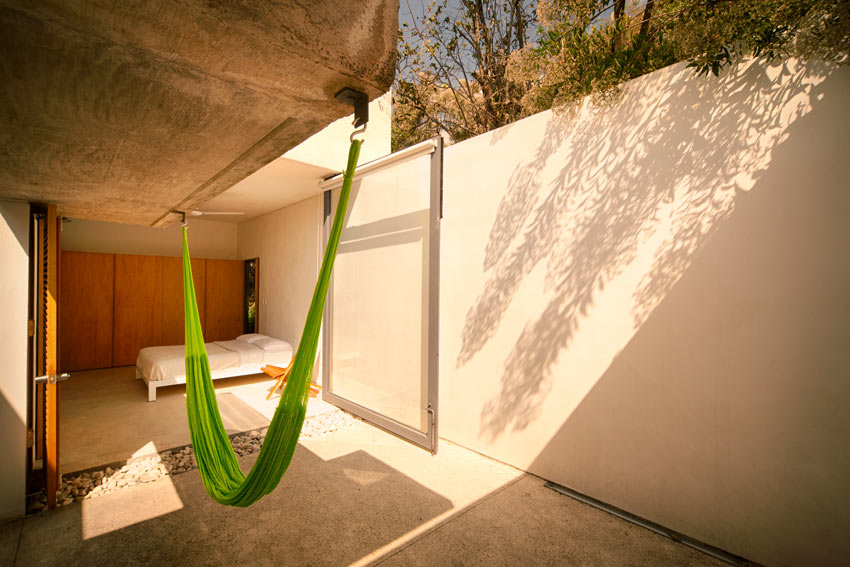
© Yoshihiro Koitani
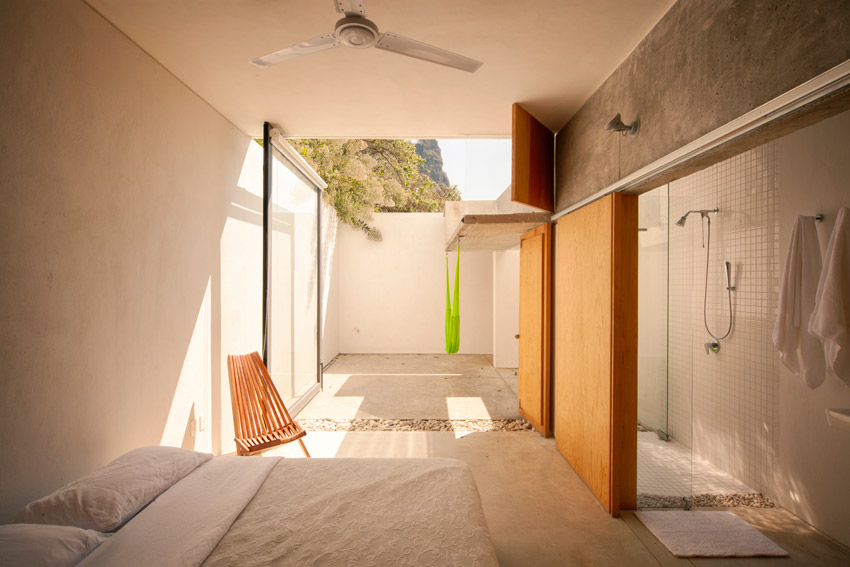
© Yoshihiro Koitani
— Stormwater management —
Two main (three considering the pool) water reservoirs exist: the potable water reservoir which is covered under the grass patio and can be seen illustrated in one of the section drawings, and the maintenance water reservoir which is circular, opened to the environment, and showed in a photograph:
1-The potable water reservoir is the main biggest (capacity 180 m3) and harvests the direct water from the roofs, only filtered through a basic process of sand and gravel filters. Before the water reaches the house, it passes through an extra purification process based on ultraviolet rays. This reservoir provides water for drinking, showers and laundry.
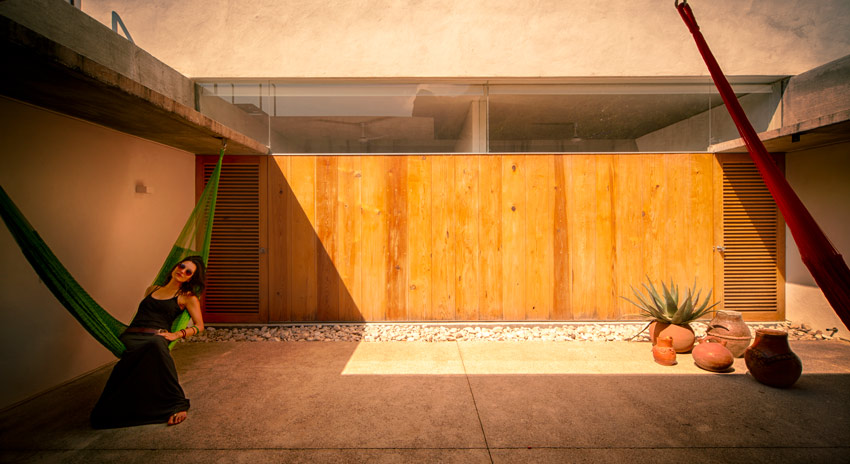
© Yoshihiro Koitani
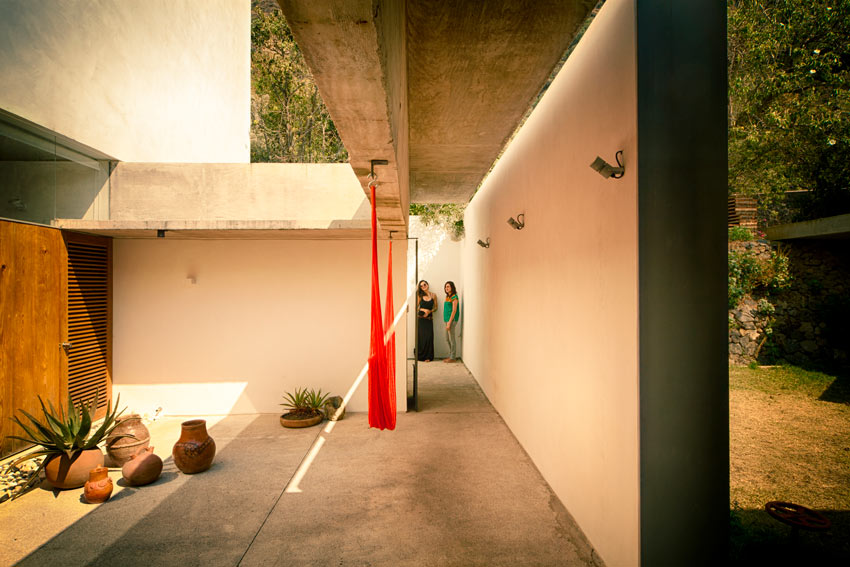
© Yoshihiro Koitani
2. The water that cannot be contained in the potable water reservoir is canalized (through stone canals running through the property) to an open reservoir (capacity 120m3), which is also served by the used water in the house (except for toilets) after a simple process of decanting the soap and oils, and any other water running through the terrain. Basically, every drop of water that is not captured by the potable reservoir ends here. All the water that was used in the house, except form toilets, ends here. This open reservoir is a fragile but effective ecosystem: is balanced through water plants, fish and an electrical pump for water to be in constant movement. This reservoir provides enough water for toilets, gardening, general cleaning, and from time to time, wildlife (in the tropics during the drought season it is difficult to find any kind of pond or fresh water source).
The water system described provides enough water for the house all year round. Conceptually, this storm water management captures every drop of rain that touches the property (3800sqm), uses it in different ways, and does not let a drop out. In this region the rain season lasts (intensively) only from July to September/October. The result is water in abundance and a piece of land that some way or another is constantly irrigated.
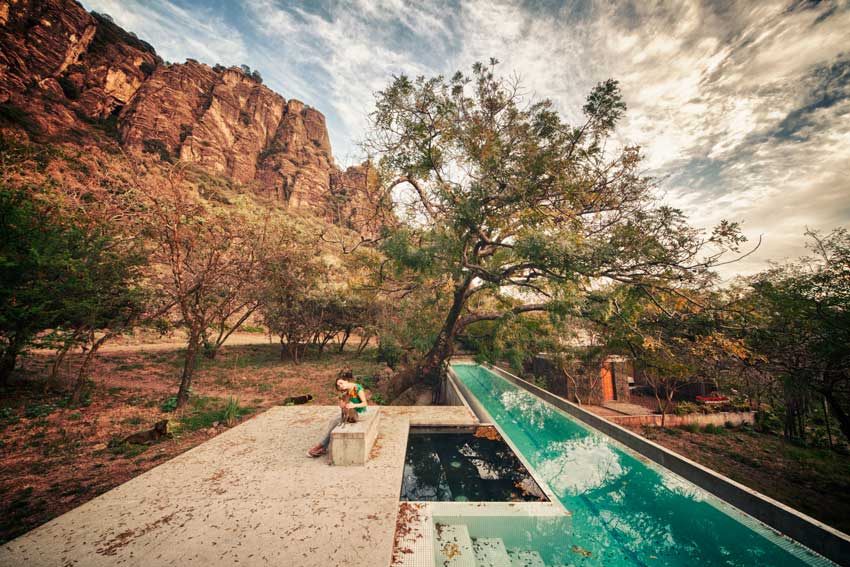
© Yoshihiro Koitani
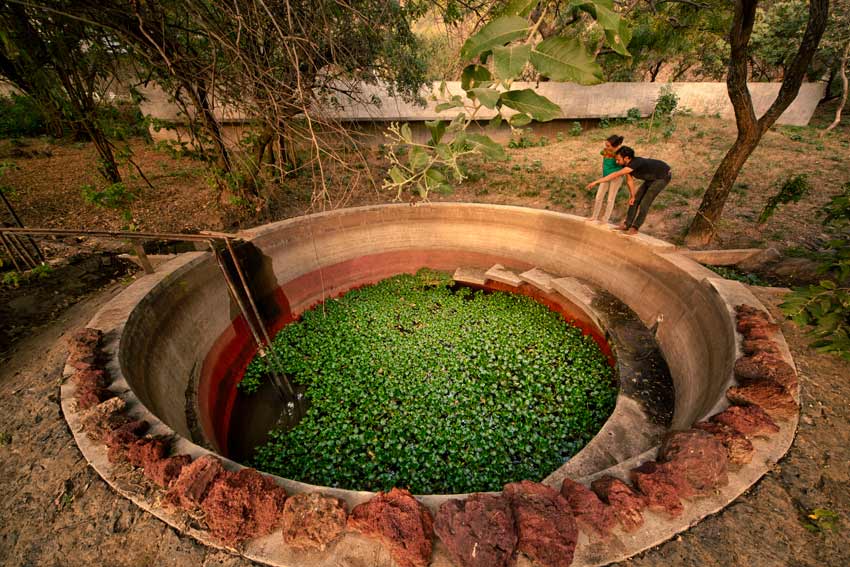
© Yoshihiro Koitani
— The swimming lane —
And the pool, yes, it is certainly an extra reservoir! A third reservoir. It is served by either one of the two reservoirs (whichever has more water). It´s cleaning system is chemical free: sea salt is dropped in the water and converted to sodium chloride. Heating is through solar panels.

